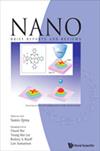提高污水处理厂出水消毒效率:ZnO纳米颗粒在超声波和UV-C工艺中的作用
IF 1
4区 材料科学
Q4 MATERIALS SCIENCE, MULTIDISCIPLINARY
引用次数: 0
摘要
超声波(US)和UV-C消毒技术已成功地应用于污水处理厂(WWTPs)的消毒目的。美国的技术通常被用作预处理步骤,以分解较大的颗粒,使其更容易被消毒。UV-C技术通常被用作许多污水处理厂的最后消毒步骤。该研究旨在评估使用氧化锌纳米颗粒(ZnO Nanoparticles, NPs)提高UV-C和US消毒方法处理废水的有效性的潜力,为废水处理提供更全面的解决方案。在本实验研究中,使用了实验室US浴(40[公式:见文]kHz)和UV-C灯(16[公式:见文]W)。为了考察ZnO NPs对微生物负荷的降低效果,在出水样品中加入5 mg/L的ZnO NPs[公式:见文]。然后,通过标准MPN/100[公式:见文]mL检测样品总大肠菌群(TC)和粪便大肠菌群(FC)的减少。利用Chick定律计算微生物负荷效率。采用Excel和SPSS-ver 21软件进行回归分析,确定各变量之间的关系。在本研究中,样品分为三组进行检测:仅暴露于超声波或接受浊度为18 NTU的UV-C辐射的样品(A组)和浊度为5 NTU的样品(B组),以及接受5[公式:见文]mg/L ZnO NPs的样品(C组)。在UV-C存在下,将时间从0.5[公式:见文]min增加到10[公式:见文]min,微生物数量减少,2[公式:见文]min被认为是最佳时间。US对TC的最大去除率分别为74.07、77.7、85.1%(40[公式:见文]C)和92.5100、100%(60[公式:见文]C), A组(30[公式:见文]min)、85.7、85.7、100%(40[公式:见文]C),其他组(B和C)分别为100%。US对FC的最大去除率分别为76.4%、88.2%和100%(40[公式:见文]C), A组(30[公式:见文]min超声)的去除率分别为88.2%、100%和100%(60[公式:见文]C),其他组(B和C)的去除率均为100%。在本研究中,我们观察到在US和UV-C存在下ZnO NPs的消毒能力显著提高。因此,ZnO NPs/UV-C和ZnO NPs/US工艺是传统消毒工艺的有价值的替代工艺,消毒效率提高90%以上。本文章由计算机程序翻译,如有差异,请以英文原文为准。
Enhancing Disinfection Efficiency of Wastewater Treatment Plant Effluent: The Role of ZnO Nanoparticles in Ultrasonic and UV-C Processes
Ultrasonic (US) and UV-C disinfection technologies have been successfully used in wastewater treatment plants (WWTPs) for disinfection purposes. The US technology is typically used as a pre-treatment step to break down larger particles and make them more susceptible to disinfection. The UV-C technology is commonly used as a final disinfection step in many WWTPs. The study aimed to assess the potential of using Zinc Oxide (ZnO) Nanoparticles (NPs) to improve the effectiveness of UV-C and US disinfection methods in treating wastewater effluent, offering a more comprehensive solution to wastewater treatment. In this experimental study, a Laboratory US Bath (40[Formula: see text]kHz) and a UV-C lamp (16[Formula: see text]W) were used. In order to investigate the effectiveness of ZnO NPs in the reduction of microbial load, 5[Formula: see text]mg/L of ZnO NPs was added to the effluent samples. Then, samples were examined for Total Coliform (TC) and Fecal Coliform (FC) reduction by the standard MPN/100[Formula: see text]mL test. The Chick‘s law was used to calculate the efficiency of microbial load. The relationship between variables was determined by regression analysis using Excel and SPSS-ver 21 software. In this study, the samples were examined in three groups: Samples that were only exposed to sonication or received UV-C radiation with Turbidity of 18 NTU (Group A) and Turbidity of 5 NTU (Group B), and Samples that received 5[Formula: see text]mg/L of ZnO NPs (Group C). By increasing the time from 0.5[Formula: see text]min to 10[Formula: see text]min in the presence of UV-C, the amount of microbial population decreased, and 2[Formula: see text]min was considered the optimal time. The maximum removal efficiencies by US for TC were 74.07,77.7, 85.1% (40[Formula: see text]C) and 92.5,100, and 100% (60[Formula: see text]C) in group A (in 30[Formula: see text]min sonication), 85.7, 85.7, 100% (40[Formula: see text]C), respectively, and were 100% in other groups (B and C), respectively. The maximum removal efficiencies by US for FC were 76.4%, 88.2%, and 100% (40[Formula: see text]C) and 88.2%, 100%, and 100% (60[Formula: see text]C) in group A (in 30[Formula: see text]min sonication), respectively, and were 100% in other groups (B and C). In this study, an important increase in the disinfection ability of ZnO NPs has been observed in the presence of US and UV-C. So, the ZnO NPs/UV-C and ZnO NPs/US processes are valuable alternatives to conventional disinfection processes by over 90% improvement of disinfection efficiency.
求助全文
通过发布文献求助,成功后即可免费获取论文全文。
去求助
来源期刊

Nano
工程技术-材料科学:综合
CiteScore
2.10
自引率
0.00%
发文量
95
审稿时长
1.6 months
期刊介绍:
NANO is an international peer-reviewed monthly journal for nanoscience and nanotechnology that presents forefront fundamental research and new emerging topics. It features timely scientific reports of new results and technical breakthroughs and also contains interesting review articles about recent hot issues.
NANO provides an ideal forum for presenting original reports of theoretical and experimental nanoscience and nanotechnology research. Research areas of interest include: nanomaterials including nano-related biomaterials, new phenomena and newly developed characterization tools, fabrication methods including by self-assembly, device applications, and numerical simulation, modeling, and theory. However, in light of the current stage development of nanoscience, manuscripts on numerical simulation, modeling, and/or theory only without experimental evidences are considered as not pertinent to the scope of NANO.
 求助内容:
求助内容: 应助结果提醒方式:
应助结果提醒方式:


